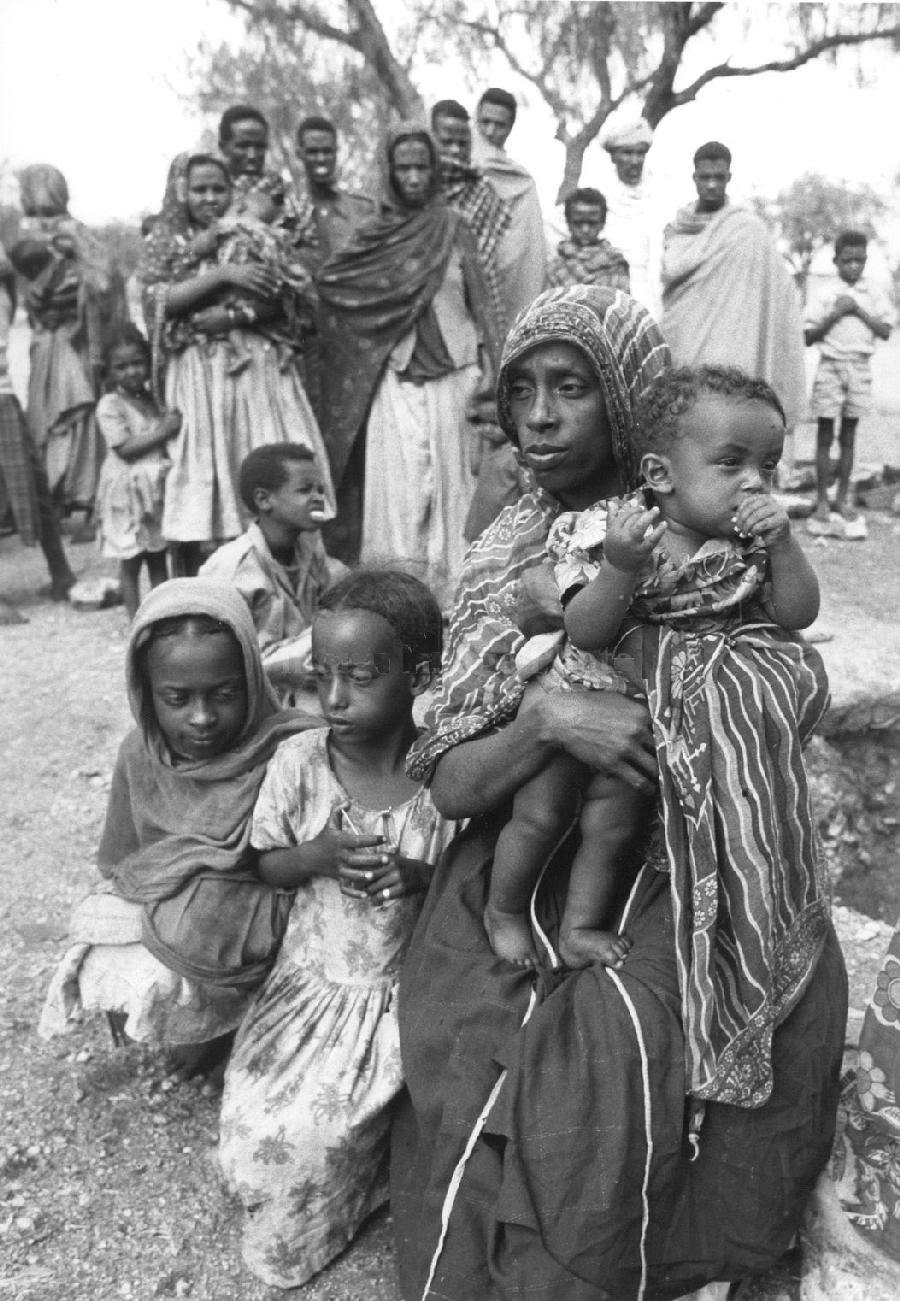
African Indepence Era Refugees: Ethiopia

Figure 1.--Somalia launched the Ethio-Somali War (Ogaden War) to seize the Ogaden, a barren border area. It was a rare conventional conflict fought (July 1977 - March 1978). Major battles were fought at Jijiga and Harar in centraleastern Ethiopis. The Ethiopian Army fled Jijiga, but stood and fought at Harar. The people in the press photo here are refugees from Harar. During the War there was no significant religious or ethnic violence. We note a 2018 incident in Jijiga in which Muslims attacked Chrustians. The violence was reportedly binstigated by Ethnic-based violence allegedly orchestrated by regional Muslim authorities. There was also attacks in Kebri Dehar, Kelafo District and other towns in the region. Businesses were looted and more than 10 Ethiopian Orthodox Tewahdo and Protestant churches were burned to the ground. Some 30 people were killed and more than 100 wounded in the attacks.
|
|
Ethiopia is one of the Africa countries that has exprienced one of the greatest refugee crisis. This has included domestic refugees, Ethiopians seeking refuge in neigboring countries and refugees fro neigboring ciynbtries seeking refuge in Ethiopia. A range of causes are responsible including drought and famine, war with Somalia, the Cold War and a brutal Communist dictaiorship. Most recently religious issues have been involved, primarily Islamist violence. A drought began (1969). It continued as persustent dry weather. The Sahel was devestated and it moved east into the Horn of Africa. A killer famine developed threatened the lives of hundreds of thousands of Ethiopian nomads (1973). Many fled their long time home range and sought food in Somalia, Djibouti, Kenya, and Sudan. Some 300,000 peasants of Tigray and Welo provinces sought relief witin Ethiopia. Refugees have moved within the country. Large numbers of foreigners in recent years from Somalia and Eritra have fled to Ethiopia. Ethiopia is hosting an estimated 250,000 people from Somalia, a country battling a 10-year long insurgency by al-Shabaab Islamic terrorists, who pledged alliance with al-Qaeda in 2012. They have been urged by the Islamic Caliphate State (Isis/Daesh) to join their jihad struggle. Ethiopia is also the starting point for Eritrean refugees who want to move north toward the Mediterranean and cross over to Europe. After Syrians, Eritreans are among the largest groups of people who embark on the perilous journeys to Europe. Most recently refugees from the fighting in South Sudan have been flowing into Ethiopia. Millions have been displaced since a civil war erupted (2013). Ethiopia has one of the fastest growing economies in the entire continent. It currently provides care fior some 750,000, making it the world's fifth largest refugee hosting country.
CIH

Navigate the Children in History Website:
[Return to Main African independence era refugee page]
[Return to Main African refugee page]
[Return to Main specific refugee groups: country trends]
[Return to Main specific refugee groups]
[Return to Main refugee page]
[Return to Main children and war page]
[Return to Main war essay page]
[Introduction]
[Biographies]
[Chronology]
[Climatology]
[Clothing]
[Disease and Health]
[Economics]
[Geography]
[History]
[Human Nature]
[Law]
[Nationalism]
[Presidents]
[Religion]
[Royalty]
[Science]
[Social Class]
[Bibliographies]
[Contributions]
[FAQs]
[Glossaries]
[Images]
[Links]
[Registration]
[Tools]
[Children in History Home]
Created: 10:03 AM 8/21/2018
Last updated: 10:03 AM 8/21/2018



